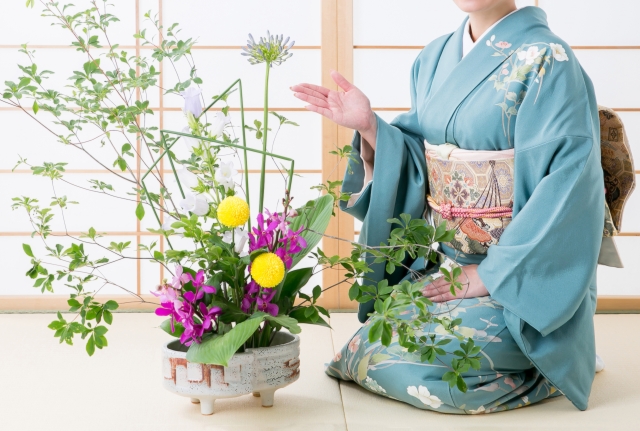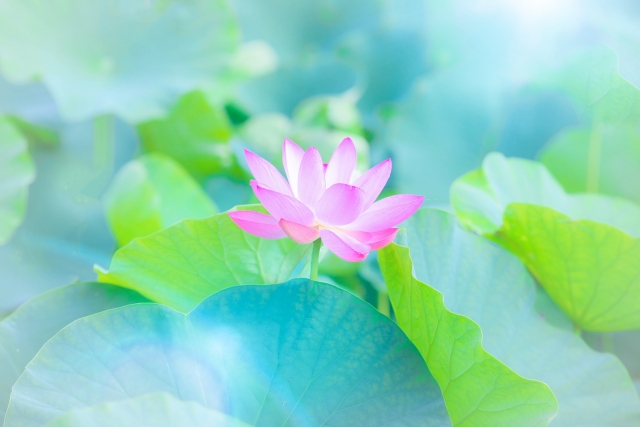
I love flowers and occasionally arrange them in a vase. Sometimes, my daughter or her partner gives me bouquets. At the Japanese-style home I’ve owned for the past year, various flowers bloom across the grounds in different seasons, adding to my enjoyment. Flowers bring richness to our daily lives.
However, I’ve never really engaged with or deeply considered Kado (the Way of Flowers) until now. As a Japanese person, I felt it was something I should know more about, so I watched a video titled:
Ikebana: Beauty as It is-Spiritual Explorers NHK WORLD-JAPAN
What struck me in this video was the idea of “standing flowers” as a connection between heaven and earth.
They spoke about allowing flowers to guide where and how they should be placed. Rather than imposing one’s own will, one listens to the flowers, asking them where they feel most comfortable and following their lead.
Kado originated in the 6th century as a Buddhist practice of offering flowers to altars. The birthplace of Kado is a temple in Kyoto, established by Prince Shotoku. The temple’s head priest, who founded the Ikenobo school, laid the foundation of Kado during the Muromachi period over 500 years ago.
Today, there are hundreds of styles of Kado. Among them, Ikenobo is the oldest and most famous. Even someone like me, who is unfamiliar with Kado, recognizes its name. Given its long history and continuation, it is easy to imagine that Kado places great importance on tradition, philosophy, and spirituality.
In contrast, Ikebana has a freer impression. It prioritizes individual creativity over the formalized styles of Kado. Ikebana is a more casual practice, often involving flowers picked from one’s garden and arranged freely in everyday settings.

In Kado, the natural beauty of flowers is enhanced by human intervention, expressing them in even greater beauty. This process has been passed down through traditional forms. Of course, as with any organized practice, Kado likely involves human relationships, power dynamics, and factions.
Yet, what unites all schools of Kado is a single purpose: to connect with and express the beauty of nature, ultimately achieving a spiritual understanding.
Kado is often described as spiritual training—a way to attain enlightenment. Its Buddhist origins make this a natural conclusion.
Kado, Shinto, Sado (the Way of Tea), Kyudo (archery)—all of these Japanese traditions share the same ultimate goal.
In Japan, many traditional practices include the term “Do” (Way). The phrase “to master the Way” often comes to mind. What does “Do” signify in all these practices?
It represents the path to enlightenment—a journey to understand God, the universe, and existence itself.
Humans experience countless paths in daily life, but the ultimate goal is the same: to reach enlightenment.
The Japanese character for enlightenment (悟り) consists of the radical for “heart” (りっしんべん) on the left and the character for “self” (吾) on the right.
The radical for “self” combines the components for the five senses and expression (五 and 口). Thus, enlightenment involves knowing both the invisible self (mind) and the visible self (body).
Through understanding oneself, one comes to know God and the universe. Self-awareness begins with the heart, which is the origin of all existence.
Reaching enlightenment is not about a fixed endpoint; it is an eternal path. This is because God, as an infinite being, cannot be fully comprehended through the limited human senses.
The heart is the starting point because it is both invisible and eternal. Without the heart, nothing can exist. For this reason, all Japanese traditions bearing the term “Do” emphasize spirituality.
Forms, styles, and etiquette may seem rigid and constraining to modern people. However, they aim to teach the most efficient, simple, and beautiful ways to express the divine. By following these forms, practitioners take the shortest path to understanding themselves and God.
In essence, all “Ways” lead to spirituality when fully mastered.

In the video, the idea of flowers guiding the arranger was described as if humans and plants were communicating.
Kado is a path to understanding oneself and God. Why does mastering this Way allow one to understand the heart of plants?
If God is infinite, then the divine exists not only within oneself but also within plants and everything else. The invisible hearts of humans and plants, made from God’s essence, resonate with each other when their wavelengths align.
Do you prefer beauty or ugliness? Humans naturally excel at expressing beauty. Why is that?
God created this world to express beauty. Humanity’s role is to realize and manifest that divine beauty.
Nature, flowers, and plants are inherently beautiful as creations of God. Through human intervention, these natural forms can be expressed in even greater beauty—this is the essence of art.
Imagine expressing beauty in ways that align with God’s vision: a neutral, harmonious expression connecting heaven and earth.
Practices like Kado and Chado emphasize graceful movements and beautiful expressions, uniting humanity and the divine in acts of creation. Every action, done with concentrated awareness, holds profound significance.
Kado is considered spiritual training because it requires repeated practice to refine expression and achieve beauty. While I have no personal experience, I imagine that achieving an expression in complete harmony with God represents a state of enlightenment.
Not limited to Kado, all forms of art and daily life involve expression. However, human expression often remains immature, leading to the destruction of nature and human hearts driven by unchecked desires.
Someday, all people may achieve rich, beautiful expressions through spiritual growth. For now, we are in the midst of training, learning through daily experiences.
If you love flowers, try Kado. If you enjoy tea, explore Chado. When I was a student, I loved Shodo (calligraphy). Whatever it may be, why not try one of Japan’s traditional arts? Without a doubt, it will enrich your heart and bring profound moments of peace.